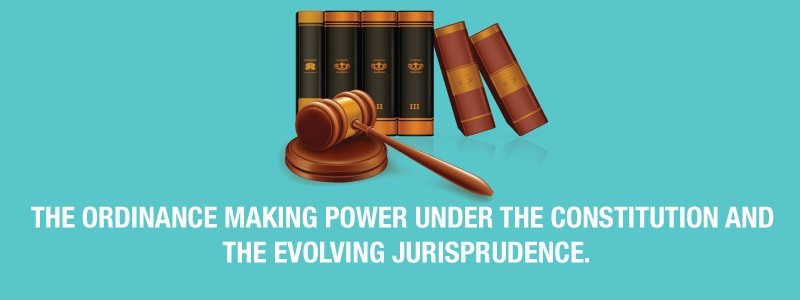The Ordinance Making Power under the Constitution and the Evolving Jurisprudence.
An Appraisal of 2017 Supreme Court Judgment on Ordinance Making Power.
The Ordinance making power of the Executive has its roots in the United Kingdom where it was the prerogative of the King to legislate on domestic matters. This exercise of the Monarch diminished with the establishment of parliamentary supremacy towards the end of seventeenth century. Since then, statutes represented parliament’s ultimate authority to enact legislation whereas Ordinances, generally speaking, came to represent the executive’s more limited authority to make narrow and specific regulations.
This dilution in the United Kingdom was in sharp contrast to the position which prevailed in the colonial British India. The Governor General as representatives of the Crown was vested with extensive authority to issue Ordinances. The Indian Councils Act, 1861 empowered the Governor General to issue directions which had the force of law. A power was conferred upon the Governor General to issue ordinances subject to two conditions: (i) the power could be exercised in cases of emergency; and (ii) an Ordinance would remain in force for a period of not more than six months from its promulgation.
Under the Government of India Act 1935, Governor General was empowered to promulgate ordinances when the Federal Legislature was not in session provided that he was satisfied that circumstances existed which made it necessary that such a law be passed without awaiting reassembly of the legislature. An Ordinance promulgated under that provision would have the same force and effect as an Act of the Federal Legislature but was required to be laid before the legislature. Such an Ordinance would cease to operate upon the expiration of six weeks from the reassembly of the legislature or if before that period, resolutions disapproving it were passed by the legislature. These provisions in the Government of India Act 1935 had great role in the Constituent Assembly Debates when it dwelled into the issue on power of making Ordinances. The Constituent Assembly Debates reflected upon the misuse of colonial rule over the exercise of Ordinance making power and acknowledged this fact. The members of the Assembly were of the opinion that Ordinance making power would be a “negation of the rule of law”. Therefore the restructuring of the power in terms of its use in emergent situations was felt necessary and was made accordingly under the aegis of Dr. B.R. Ambedkar.
Download PDF to your email
*/ ?>Dear Sir,
Hope you are fine & ok. Sir, I need your kind co-operation and help. Pls, Send me the following tropic ” Legality of Ordinance Making power of President from constitution perspective”
Thanks,
Milton Sarker.
LL.M Student of Sonargaon University, Bangladesh.
The Only Resource Needed To Crack The UPSC Prelims Test 2017
Monthly Current Affairs Archives

 Login
Login

![Salient features of Right to Information [RTI Act ] 2005](http://65.1.154.182/wp-content/uploads/2017/07/SALIENT-FEATURES-OF-RIGHT-TO-INFORMATION-RTI-ACT-2005-FOR-CIVIL-SERVICES-IAS-EXAM-PREPARATION-1-81x66.jpg)
![Right to Information [ RTI Act ] 2005 -Historical Background](http://65.1.154.182/wp-content/uploads/2017/07/RIGHT-TO-INFORMATION-RTI-ACT-2005-FOR-CIVIL-SERVICES-IAS-EXAM-PREPARATION-01-81x66.jpg)













